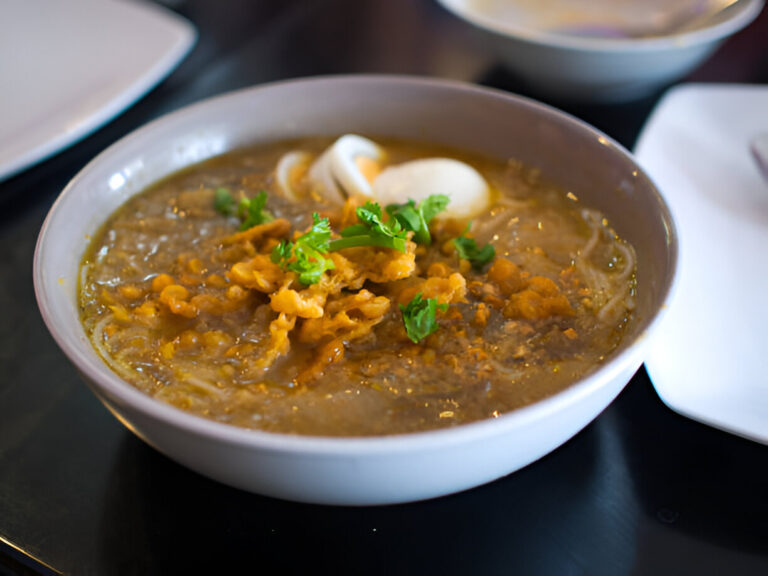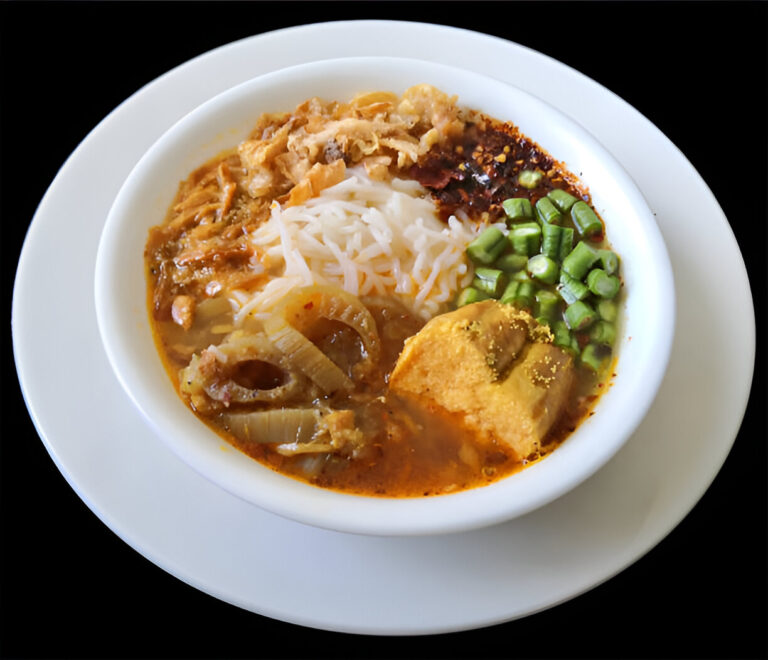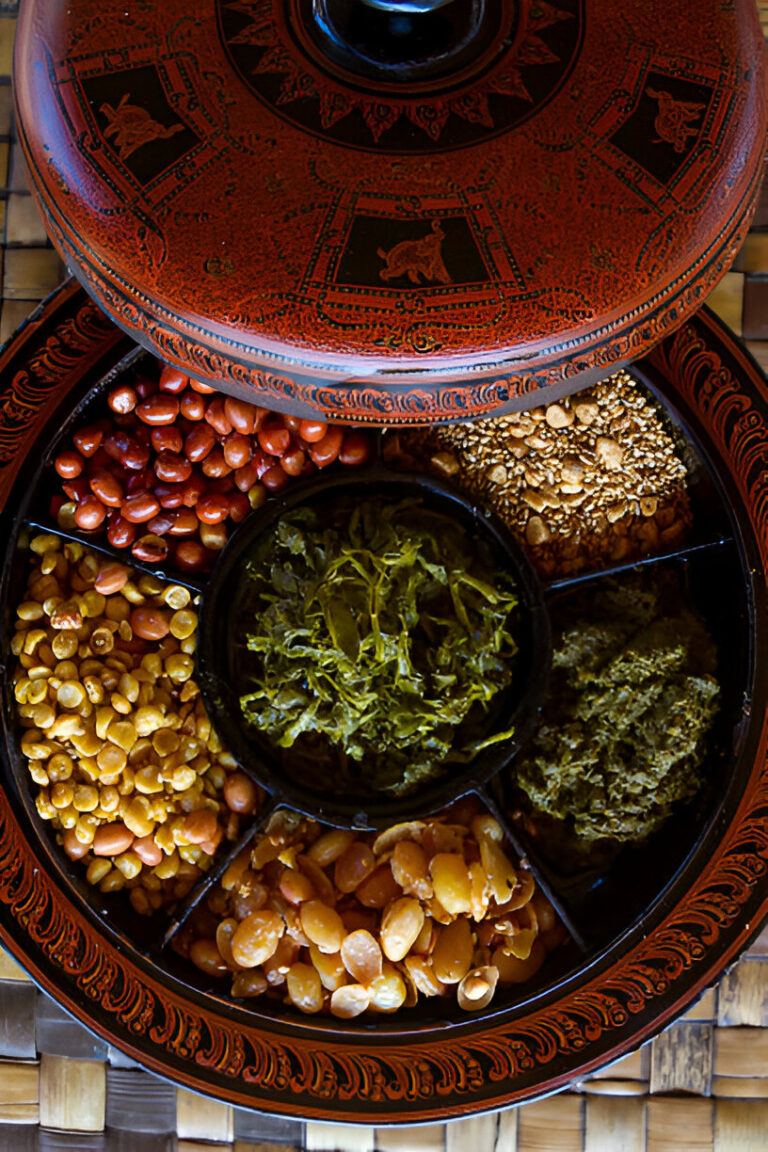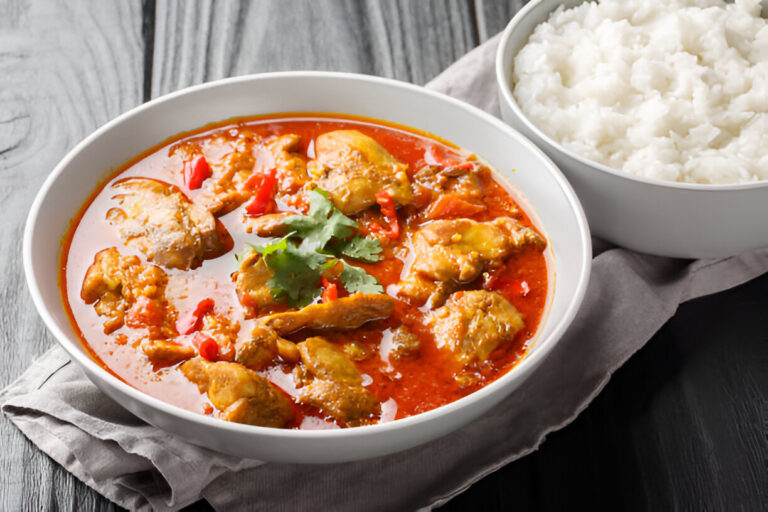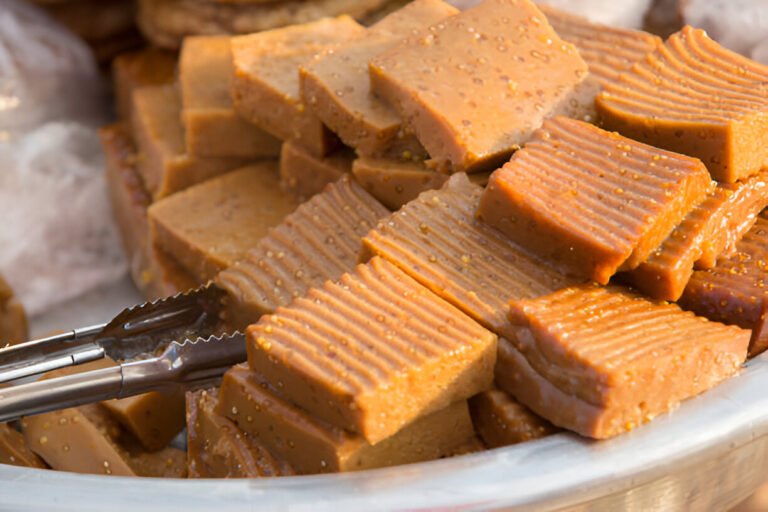Tea leaf salad
- Home
- About Myanmar
- Foods
- Salads
- Tea leaf salad
Tea leaf salad is one of Myanmar’s most iconic and beloved traditional dishes. Known locally as Lahpet Thoke, it features a unique combination of pickled green tea leaves tossed with a delightful mix of crunchy and savory ingredients. The salad usually includes fried garlic, roasted peanuts, toasted sesame seeds, fried yellow split peas, chopped tomatoes, cabbage, and a touch of lime juice and chili for a bright and flavorful kick. Tea leaf salad is famous for its bold, tangy taste and wonderful contrast of textures — soft, slightly bitter tea leaves balanced by crispy nuts and beans. Beyond its rich flavor, it holds cultural importance as a symbol of hospitality and togetherness in Myanmar. Traditionally served at gatherings or tea shops, Lahpet Thoke is not only a delicious snack or light meal, but also a true reflection of the warmth and social spirit of Myanmar people.
Ingredients (For the salad)
- 3–4 tbsp fermented tea leaves (lahpet) – store-bought or homemade
- 1 cup shredded cabbage
- ½ cup chopped tomatoes
- 2 tbsp roasted peanuts
- 2 tbsp fried garlic with oil
- 2 tbsp fried yellow split peas (or chickpeas)
- 1–2 green chilies (sliced thin)
- 1 tbsp dried shrimp (optional)
- Lime juice
- 1 tbsp salt (to taste)
Optional garnishes
- Toasted sesame seeds
- Crispy shallots
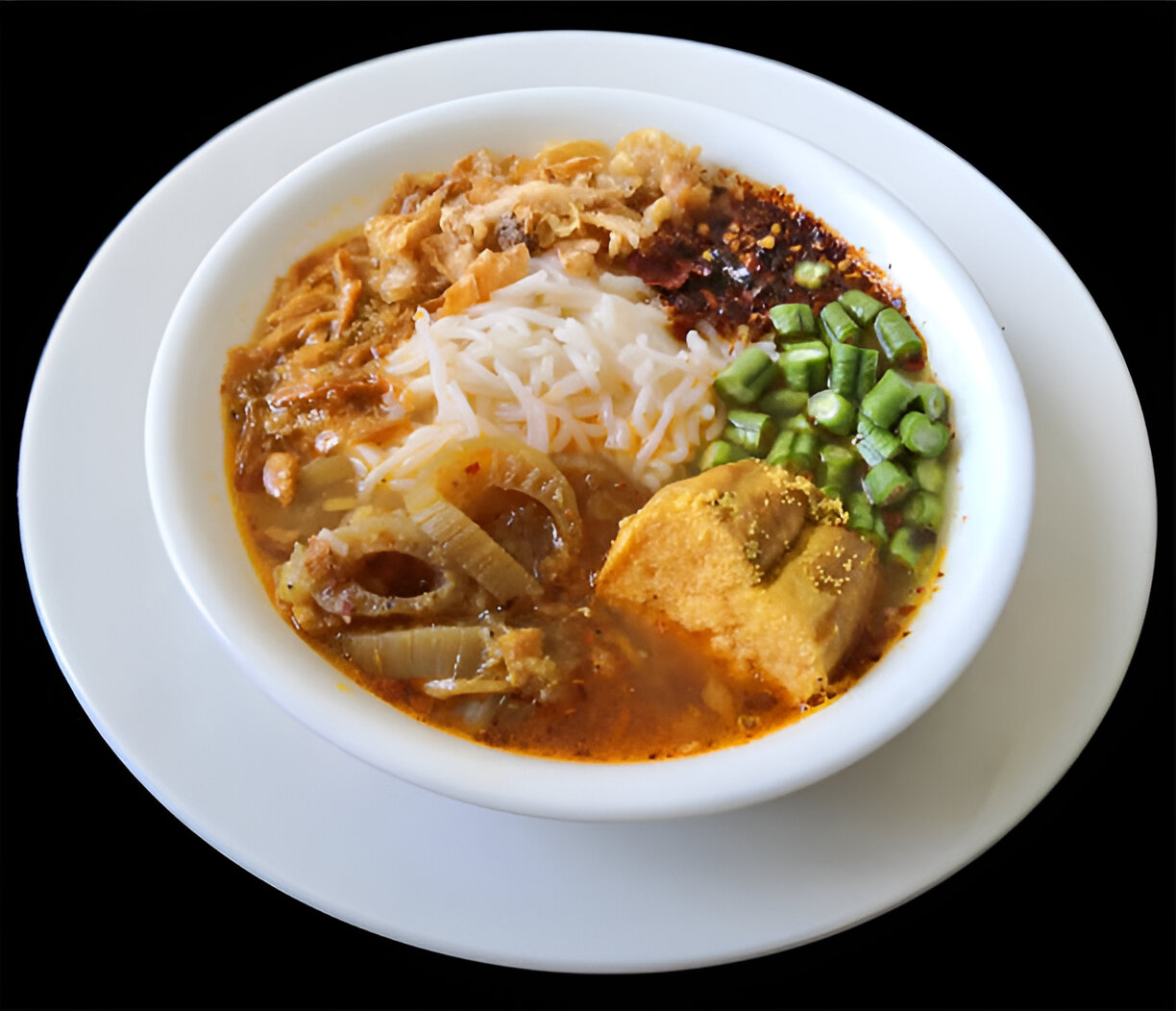
How to Make?
To prepare Burmese tea leaf salad, begin by preparing all your crispy toppings like fried garlic, roasted peanuts, and fried split peas, which give the salad its signature crunch. In a mixing bowl, add the fermented tea leaves as the base, then combine them with shredded cabbage, chopped tomatoes, green chilies, and dried shrimp if using. Drizzle in some fried garlic oil, lime juice, and salt to taste. Toss everything together gently by hand or with utensils, making sure the flavors are well blended. Finally, top the salad with a mix of roasted nuts, sesame seeds, and any extra crispy garnishes. Serve fresh as a snack, appetizer, or side dish. Lahpet Thoke is unique for its bold, earthy, sour, and savory notes, and it’s considered both a cultural delicacy and a symbol of hospitality in Myanmar.
